The End of an Era (1971 – 1993)
Phipps appointed a new horticulturist in September 1971 after a nearly year-long search: Recent Penn State graduate Edward A. Vasilcik took the helm after serving as assistant horticulturist since winter 1970 and obtaining a master’s in floraculture in spring 1971.58 Vasilcik, age 24, gave an increased emphasis to the themes of flower shows, adding show names and carrying the theme throughout the display rooms. Vasilcik pioneered the extensive use of props and oversaw their construction at Phipps. At this time, the Conservatory employed a full-time carpenter who designed and built all of the flower show props. Some were extremely elaborate!
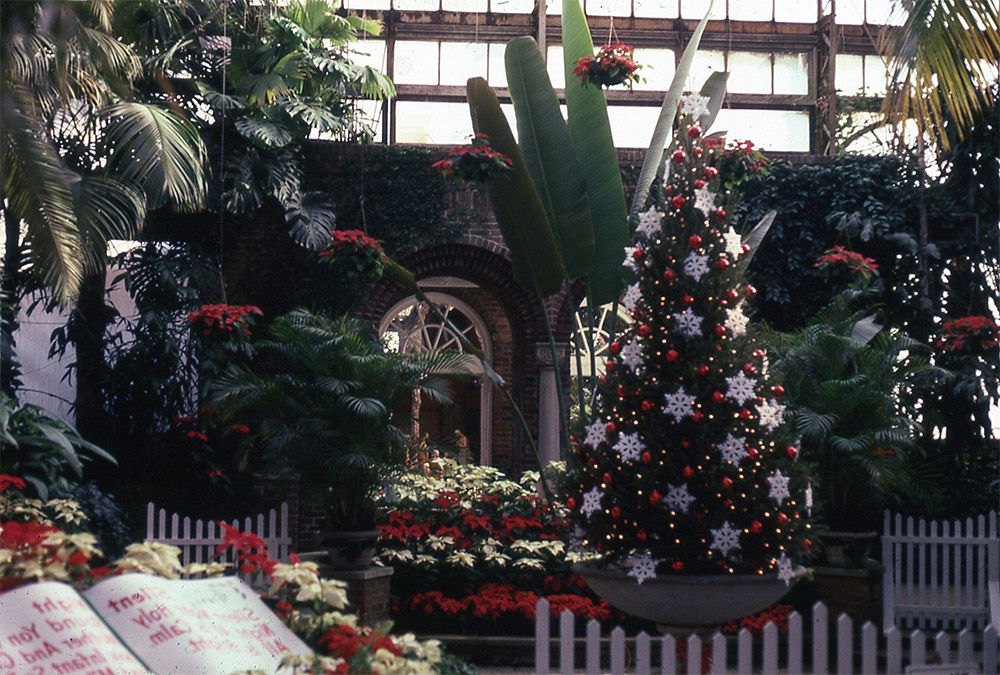
The early years of Vasilcik’s tenure at Phipps included a major restoration of the now 80 year-old glasshouses. In 1975, an ad-hoc committee (also known as the Restoration Committee) of private citizens was organized by Elizabeth Childs to raise funds in cooperation with the Pittsburgh History and Landmarks Foundation in order to make large-scale improvements at Phipps. The Restoration Committee planned to work with the City of Pittsburgh to facilitate restoration of the display rooms and greenhouses, to improve the front entrance and to add a new educational facility. The campaign was called “Pipes, Panes and Plants.” The Restoration Committee raised more than $500,000 from private donations and local foundations, which was added to city and federal contributions of $2.2 million.59
The repairs were greatly needed. Work began on July 14, 1975, and by September, a workman noted that his team “can’t even perform their chores inside [during heavy storms] because rain pours through leaks in the roofs and walls.”60 Many rooms and greenhouses were painted inside and out. Some greenhouses were entirely re-glazed with new glass and new side vents were installed in display rooms. New glass panels were also installed in parts of Palm Court, Exhibition A and the Japanese Garden (today’s East Room). All re-glazed rooms in the Conservatory received the glass as a donation from Pittsburgh Plate Glass Industries at an estimated value of $74,000.
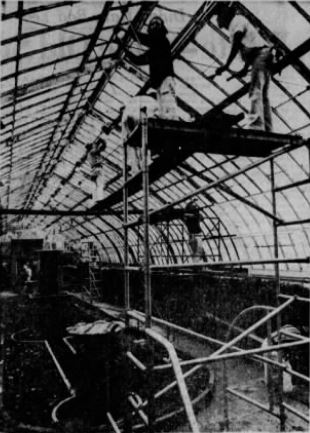
The extensive rehabilitation work continued until February 1977; but on Nov. 13, 1976, Pittsburgh Mayor Peter Flaherty was notified by the Pennsylvania Historic and Museum Commission that Phipps Conservatory had been placed on the National Register of Historic Places by the Secretary of the United States Department of the Interior. Phipps was officially recognized as a historic American structure — the repairs, it seems, came just in time. The announcement likewise prompted Pittsburghers to contribute to the campaign to restore the now 83 year-old Botany Hall education building. 60
Despite the renovations, Winter Flower Show of 1976 was displayed as scheduled. But in 1978, Phipps closed its doors for a yet-larger restoration. This time, the cost was $3.2 million and renovated the entire Conservatory. These repairs included: A redesigned Desert Room (formerly known as the Cacti House) with new walkways; new exterior lighting fixtures, Victorian-style gas lamps; removal of the Border Garden and renamed “Exhibition B” (now called the Serpentine Room) with the return of the curving red brick walls and walkways; red brick terrace built in the Modern Room (now known as the Gallery Room); new utilities, including plumbing and drainage systems, and electrical and temperature control systems; new aggregate surface walkways installed to prevent the forming of water puddles; new growing benches installed in the greenhouses for a one-third increase in bench area; removal of the wrought iron grillwork hiding the heating lines in the Victoria Room, replaced with red brick walls; extensive glass replacement throughout the Conservatory; sandblasting and painting of the exterior foundations of all rooms; and installation of a steam feedline to the Bellefield Boiler Plant, passing beneath the Schenley Bridge to provide Phipps with steam heating.
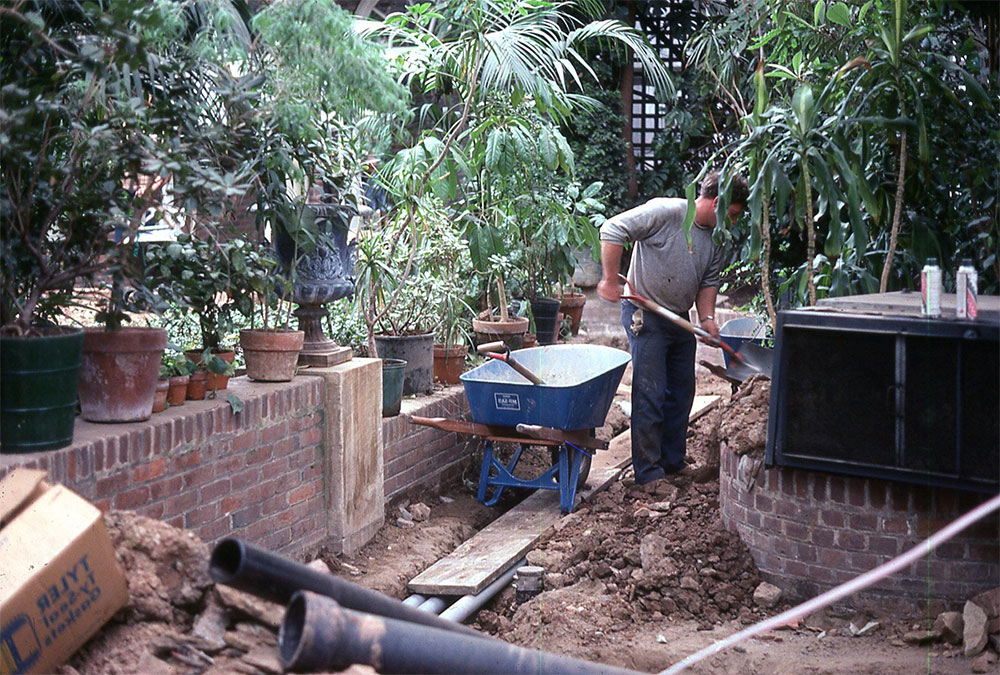
The massive, multi-year renovation project resulted in the relocation of Fall Flower Show of 1978 to the City County Building on Grant Street in downtown Pittsburgh. Spring Flower Show was cancelled altogether due to the construction, making 1978 the first year in Phipps’ 85-year history to not host a Spring Flower Show. The Conservatory had hoped that some of the 12 display rooms would be ready by the opening of the show, but, according to Department of Parks and Recreation Head Louise Brown, “Every room in the conservatory is torn up.”61 Pittsburgh Mayor Richard S. Caliguri approved for Phipps to host a plant sale under a tent on the lawn outside the glasshouses, describing this as “the next best thing” because “at least people can get some feeling of spring.”61 Some 20,000 plants that had been forced to bloom prior to the show cancellation were now offered for sale to the public on a first-come, first-served basis at prices ranging from $1 to $6. The sale ran for one week from March 18 – 25. Thousands of opportunistic buyers waited patiently in 30°F weather while city police directed a high volume of traffic through the area. It is estimated that this sale raised $40,000 for Phipps.62
On June 9, 1979, the Conservatory reopened with a fresh, history-focused appearance and refreshed facilities. As if to commemorate this much-needed rejuvenation of Pittsburgh’s historic glasshouses, in 1979 Mr. and Mrs. Anthon Bagdon of Murrysville, PA gifted a ficus forest bonsai to Phipps. The bonsai was created by John Naka at a Potomac Society Symposium in Washington, D.C. and was displayed in a container created at the Tokanami Kiln in Japan. The Conservatory’s orchid collection also grew again — in January of 1980, the Lucy K. Schoonmaker collection of 100 orchids was donated.
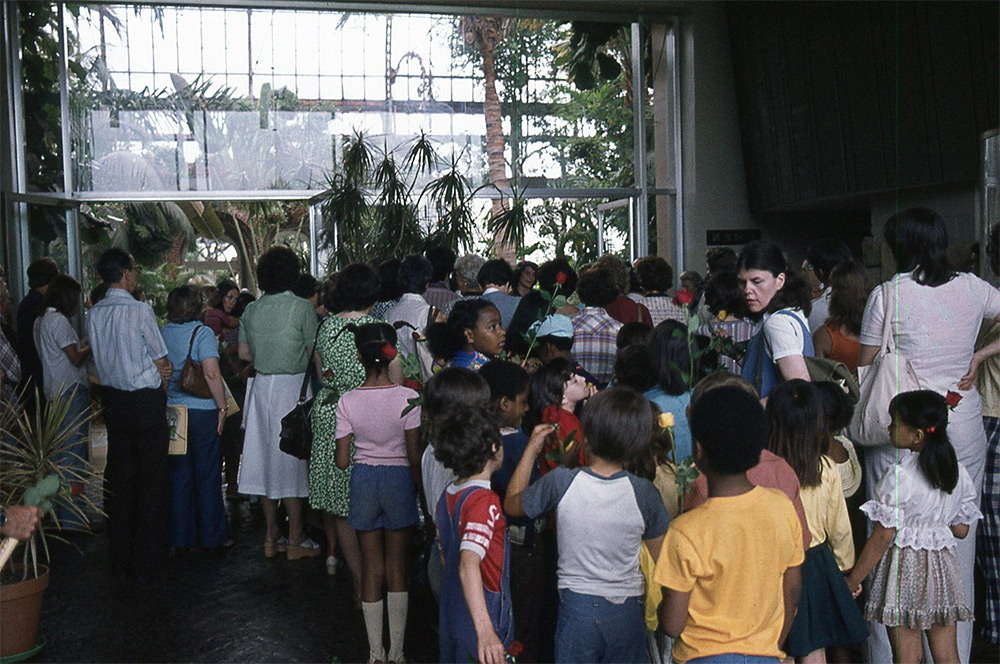
Spring of 1980 saw the beginnings of our Conservatory’s now-expansive docent program. Horticulturist and guide Irene Jacob trained the first class of Phipps docents after contacting Department of Parks and Recreation Head Louise Brown in 1979. Jacobs had proposed that the Conservatory would benefit from offering informative tours by trained docents. Brown agreed, and the first class of 22 women graduated on July 14, 1980 after a 12-week training course in plant identification, history of plants, propagation, cultivation methods, interior decorating and more.63 The inaugural docent class presented their own entirely researched and developed “Plants of the Bible” tours from 1983 – 1991.
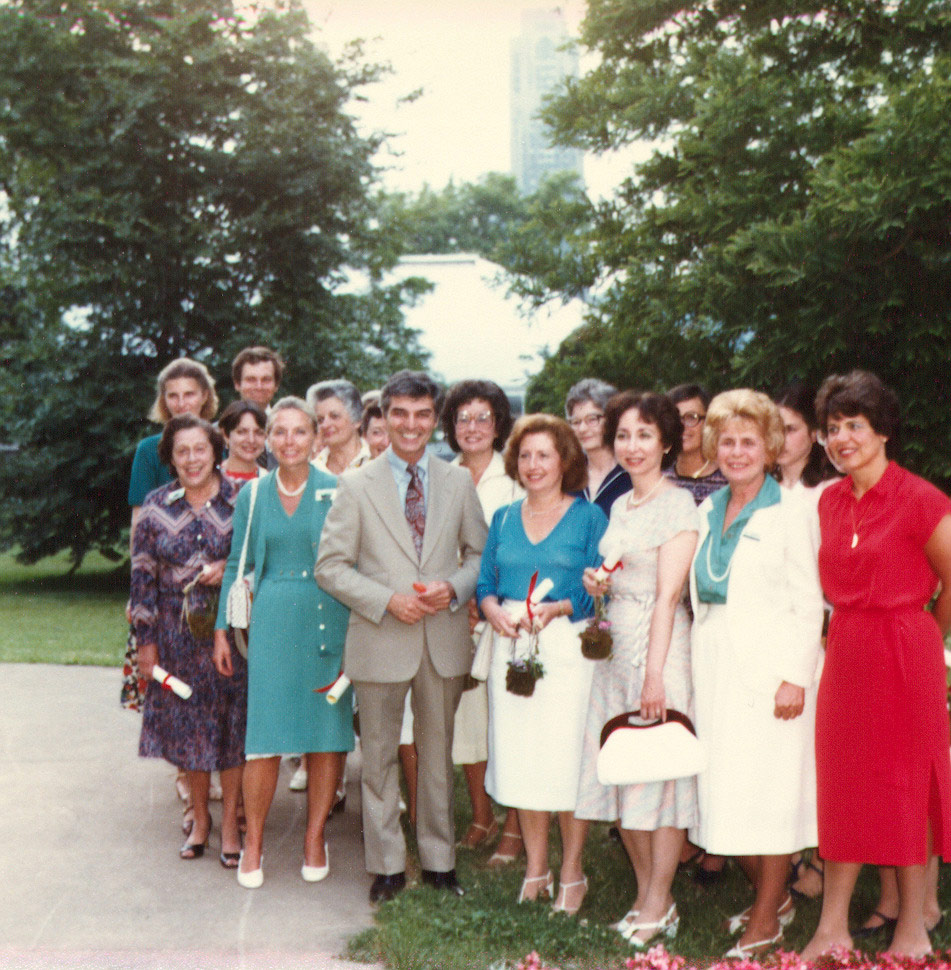
Phipps’ facilities and public offerings continued to bloom through the 1980s. The City of Pittsburgh contracted the Hanlon Electric Company in 1980 to install interior lighting fixtures, which were funded by the Restoration Committee of the Pittsburgh History and Landmarks Foundation. And in autumn of this year, the Department of Parks and Recreation Division of Conservatories and Gardens displayed street signs to advertise Fall Flower Show. This was the first city-organized advertisement campaign for the Conservatory.
Phipps celebrated our 90th anniversary in 1983 with a festive party! A large tent was erected on the front lawn for live music and entertainment, dancing, balloons and a “Happy Birthday” sing-along. Perhaps the most show-stopping attraction was the massive 4-by 8-foot cake in the shape of the Conservatory itself with icing walkways and edible glass panes. Steinmetz Bakery in Carnegie, PA crafted the Conservatory’s “sweet” likeness in a mix of flavors. An estimated 1,500 guests attended the public celebration. The U.S. Post Office commemorated this milestone with a special envelope and cancellation stamp available from a temporary office inside the Conservatory. 64
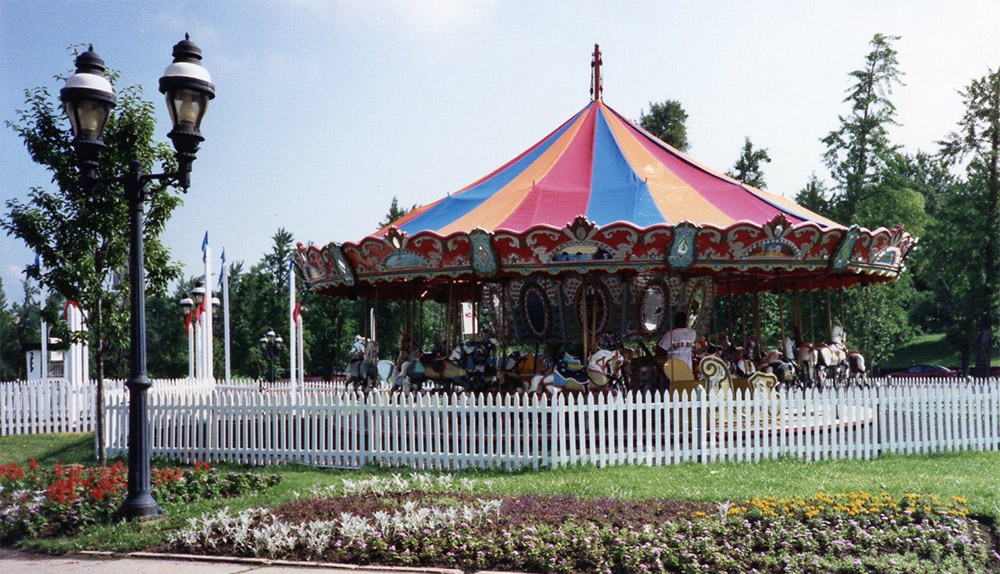
More refreshment to Phipps' facilities took place through the mid-1980s. In 1984, the Stewart Johnson Iris Fountain in the Perennial Garden (now called the Outdoor Garden) received new plumbing lines, and in 1985, the three hand railings currently found at the Palm Court steps were installed with funding provided by the Phipps Restoration Committee. The Committee then changed on May 6, 1985 by dissolving itself to form a new committee called Phipps Friends. Former Board of Trustees member Mernie Berger described the simplicity yet necessity of Phipps Friends’ work to raise funds for the Conservatory:
The organization would hold very simple events, such as bake sales and galas, to help raise funds. We would also cook food and charge a minimal amount of money for community members to come: there would be hor d’oeuvres and wine for the attendees in a typical fundraiser gala. It was all very simple but we held our place until Phipps eventually became privatized.64
1984 was also a frightful time at Phipps! Fright Nights debuted in October with eight rooms full of haunts and spooky sights. Admission was $1 for adults and $0.50 for children, with trick-or-treat bags included.65 This annual event became very popular, but was deemed potentially harmful to the plant collections and was discontinued in 1993. Today, Phipps is pleased to offer our family-friendly Halloween Happenings evening event each year!
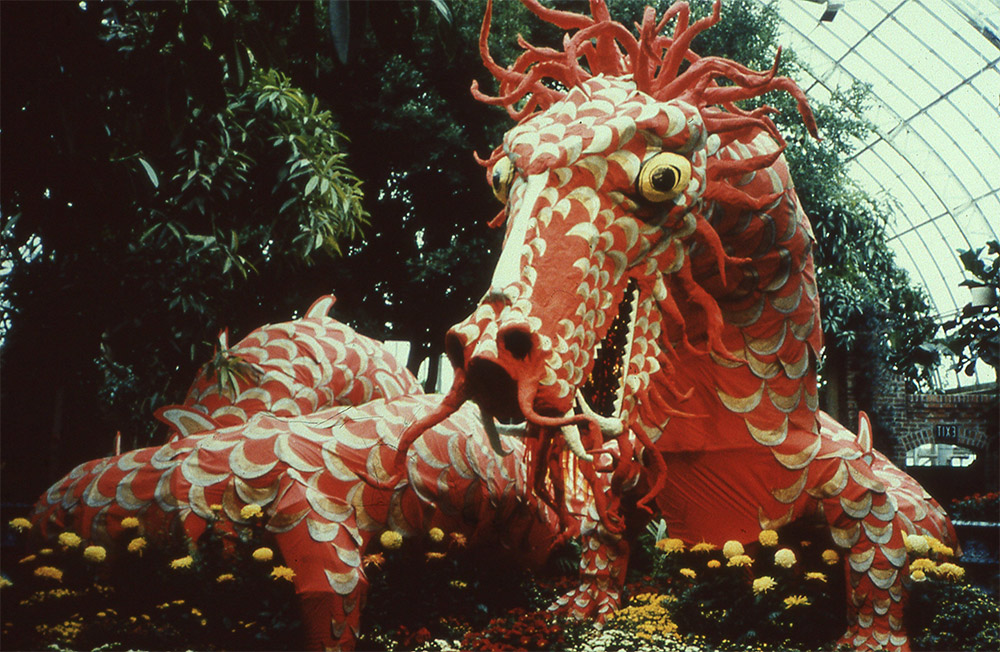
1986 saw the evolution of our current Outdoor Garden occur when groundbreaking took place for a new one-acre garden to replace the now 51 year-old Perennial Garden. The Garden Club of Allegheny County provided funding. Proposed features included a fountain, a medieval herb garden, hardy perennial beds, night lighting and handicapped accessibility. During this renovation, the Steward Johnson Iris Fountain was cleaned and received a new plaque.
Garden Club member Mernie Berger had at this time worked with fellow club members to restore the gardens: “We designed what was going to go in each bed; we bought the plants, then planted them, and lastly took care of them. …It would be a quiet place where the featured plants were mainly plants that grew in the Southwestern Region of Pennsylvania.”65 The Outdoor Garden renovation completed and the new area opened in September 1987.

Phipps expanded our connections with our guests in the late 1980s with the introductions of now-familiar programs and publications. The first Members Event took place in February 1987 for Phipps Friends. In November 1987, an informal newsletter began to serve the growing number of Phipps Friends (formerly known as the Restoration Committee). This paid membership steadily aided the Conservatory. Informative newsletters for supporters of Phipps have been published continuously since this time.
Edward Vasilcik, head of horticulture at Phipps, resigned in January 1987 after serving for 18 years. The vacancy was quickly filled by the assigning operation responsibilities to two Phipps employees: Grower Gary Baranowski and Foreman Joseph Martrano. Baranowski described in a 2011 interview how he approached working with a changing team to move Phipps forward:
I firmly believed in using every bit of talent we had onboard. We’d sit down for preliminary planning meetings, and this individual, Mark Stuber, who would always say at the first meeting it can’t be done at the first meeting. And then, the next morning – I could almost set my watch by it – he’d come busting through the doors, ‘I’ve got an idea!’ And he’d have it all laid out. He was amazing! It was always great to see people shine, and really do what they did best.66
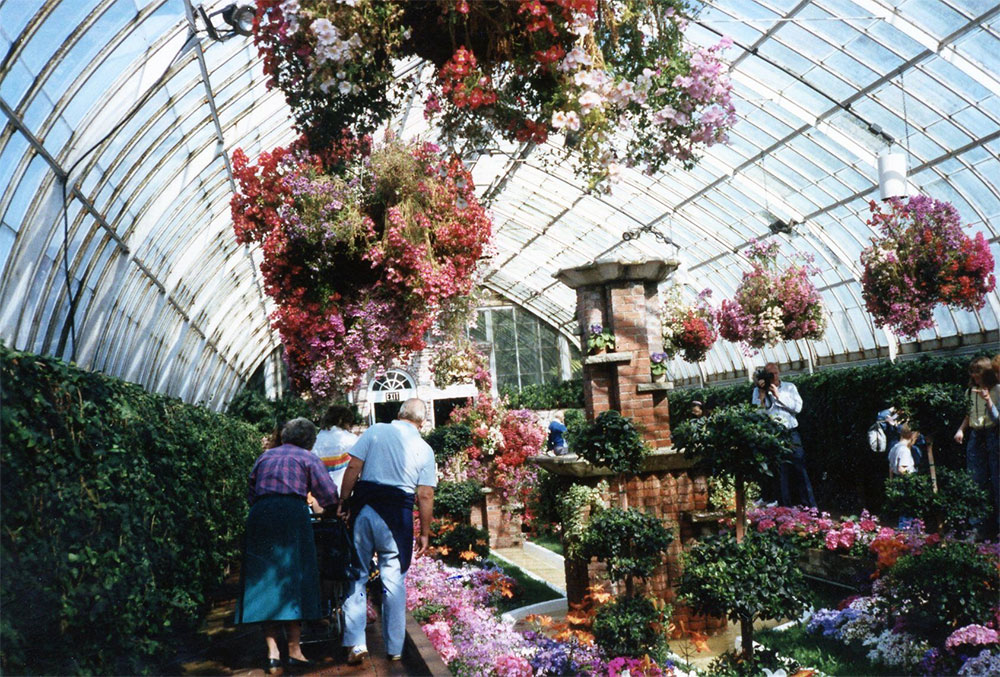
Phipps moved forward under the leadership of these longtime staff to close out the decade with more growth of operations. The City of Pittsburgh completed renovations of many key display rooms, including the Fern Room and Victoria Room in 1984, the Orchid Room, Stove Room and Exhibition B (now called the Serpentine Room) in 1986, and the Desert Room, Japanese Garden (today called the East Room), Broderie Room and Exhibition A (today’s Sunken Garden) by early 1990. The newly reconstructed Outdoor Garden was offered as a rental site for the first time in February 1989, and to accommodate availability from May 15 – October 15, a rental supervisor joined Phipps staff in April 1989. Also in February, Phipps Friends signed a contract with Environmental Planning and Design to develop a Phipps Conservatory master plan. This strategy involved a plant exhibit and collections consultant and a consultant in greenhouse production and maintenance. The decade ended with a dazzling debut of Phipps’ Candelight Tours during the 1989 Winter Flower Show. The elegant ambience of candlelight in the Conservatory delighted guests and has appeared annually since.
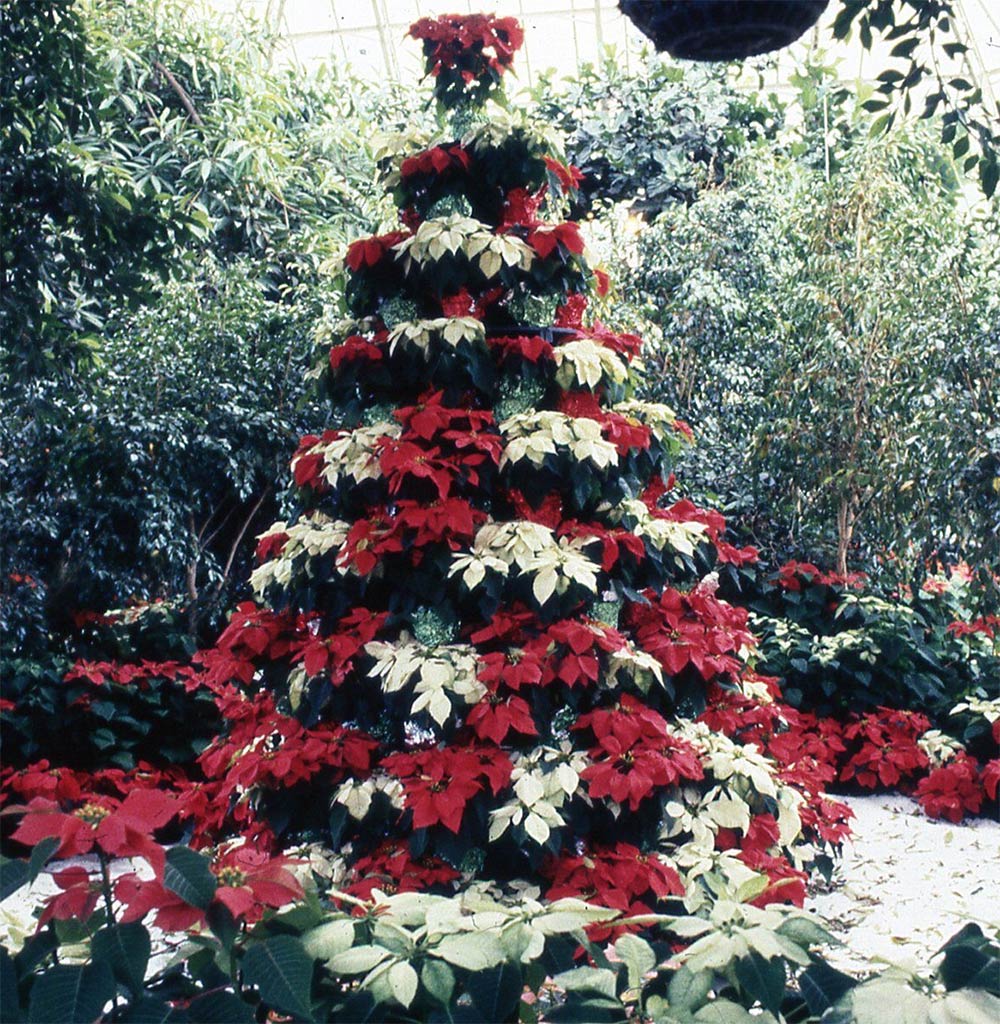
Phipps was on the cusp of our 100th anniversary, with the greatest changes to our management, operations and facilities still to come.
Gary Baranowski was appointed Head of Horticulture on May 1, 1990 by the Board of Directors. In June 1990, the first butterfly display premiered at Phipps, called “Butterfly Days.” The month-long event was a collaboration between Phipps, Citiparks and Carnegie Museum of Natural History. Precursor to today’s popular annual Butterfly Forest, Butterfly Days involved the releasing of hundreds of butterflies into the Conservatory’s Fern Room and Stove Room, where plants vital to the insects’ diets were temporarily installed. Guests visiting today can still view zebra longwing, Julia longwing and monarch butterflies species during the annual Butterfly Forest exhibit in the Stove Room. All of these species initially appeared in the Stove Room in 1990.67
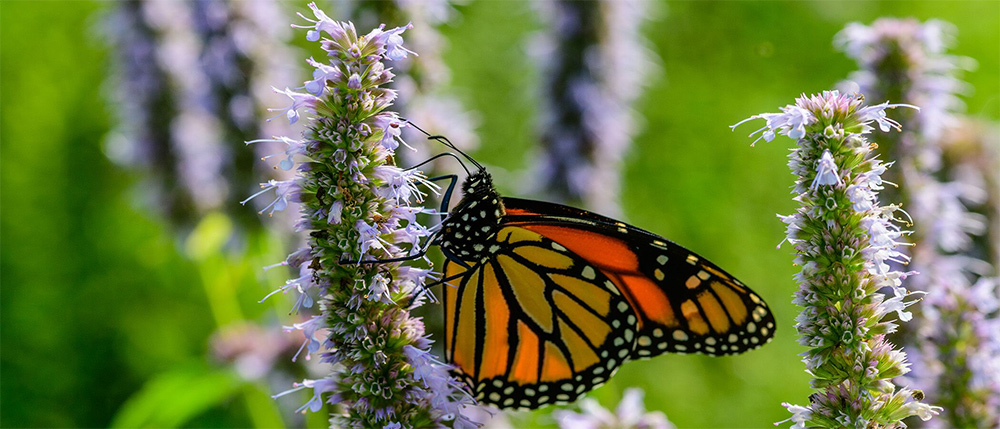
The early 1990s saw many new additions to Phipps' ever-diversifying plant collections. Phipps acquired our first bonsai collection in October 1990 when Pittsburgh Bonsai Society charter member Anne Snyder willed her assemblage of 150 specimens to the Conservatory. Phipps’ acquisitions expanded in 1991 when Melvin Tales of Youngstown, OH willed 70 bonsai specimens to the Conservatory. Keith Scott joined the staff as curator of this grown bonsai collection and his pieces were added. Phipps' collection now exceeded over 100 bonsai. In 1992, Erba Heinen gifted a group of cacti including a large saguaro to Phipps. Also in 1992, Conservatory staff opportunistically purchased exotic plants from the Ameriflora exhibit in Columbus, OH upon its closing. This acquisition included three saguaro cacti and plants native to Australia and India.68
During this period, other renovations of the aging Conservatory took place to keep this historic national landmark looking as if in its prime. In April 1991, the Economic Room (known today as the South Conservatory) was renovated after the closing of the Spring Flower Show, and work was completed in time for the opening of the Fall Flower Show. In May 1991, construction began on the Japanese Courtyard Garden, which can be viewed today outside the Gallery Room. Japanese designer Hoichi Kurisu oversaw the layout of this garden, lending his award-winning expertise to create a beautiful and tranquil space which opened on September 19, 1991. In June 1992, the area in front of Botany Hall was reimagined into a rose garden with a gazebo. The gazebo was afterwards gifted to the City of Pittsburgh in 1996, whereupon it was installed at the foot of Flagstaff Hill in Schenley Park and remains there today. And in April 1993, the Stove, Orchid and Serpentine Rooms underwent reconstruction after a prior renovation in 1986.
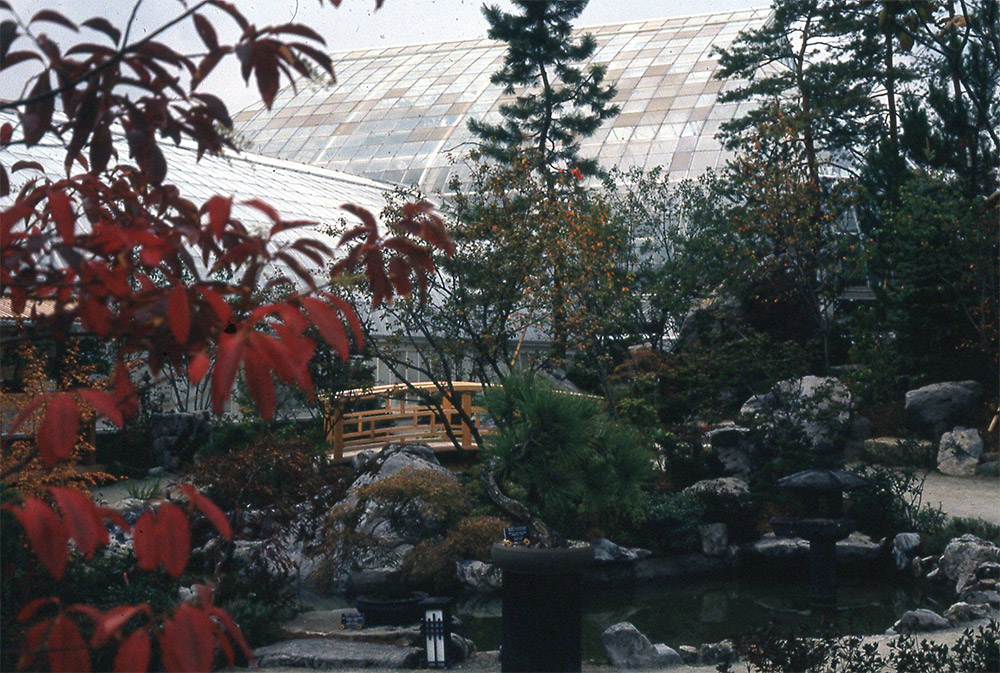
Head of Horticulture Gary Baranowski enjoyed the frequent changes at Phipps early during his tenure, as it drew upon his former Grower experiences while expressing his creativity:
I enjoyed absorbing it all, and being able to do the things I was able to do. Even up to the time when the Japanese Garden was built during my tenure – that whole process of meeting with other professionals, other garden designers, trying to secure the plant material, trying to conceptualize it… it was an amazing ride!
The most exciting thing about Phipps is that it was always dynamic. It was always changing.66
The greatest change to Phipps Conservatory was just on the horizon, in July 1993.
Citations
58. “‘The Kid’ Takes Over at Phipps.” The Pittsburgh Post-Gazette 45 no. 12 (1971): 14. Newspapers.com.
59. “Drive Opens for Added $250,000 to Repair Phipps Conservatory.” The Pittsburgh Post-Gazette 49 no. 47 (1975): 19. Newspapers.com.
“Adding to the Glory of the Phipps.” The Pittsburgh Post-Gazette 50 no. 126 (1976): 6. Newspapers.com.
60. “No Show, Phipps Plans Flower Sale.” The Pittsburgh Press 94 no. 230 (1978): 14. Newspapers.com.
61. “Phipps Buzzes with Bloom Buyers.” The Pittsburgh Press94 no. 265 (1978): 1. Newspapers.com.
62. “Happenings.” The Pittsburgh Post-Gazette 53 no. 278 (1980): 18. Newspapers.com.
63. “Phipps Celebrates 90th Anniversary.” The Pittsburgh Post-Gazette 56 no. 299 (1983): 17. Newspapers.com.
64. Mernie Berger, interview by Kim Vo, February 24, 2012, transcript. Dropbox.com.
65. “Horror Houses Offer Halloween Fun.” The Pittsburgh Post-Gazette 58 no. 69 (1984): 48. Newspapers.com.
66. Gary Baranowski, interview by Kim Vo, December 19, 2011, transcript. Dropbox.com.
67. “Butterfly Days Come to Phipps.” The Indiana Gazette 86 no. 39: 56. Newspapers.com.
68. Ameriflora


